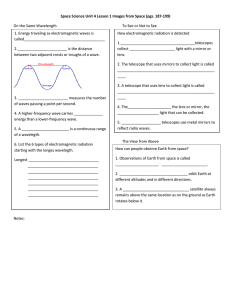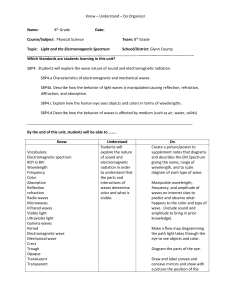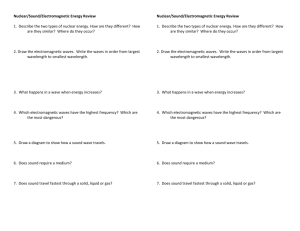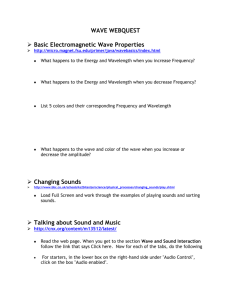Waves and Optics Pupil Learning Outcomes
advertisement
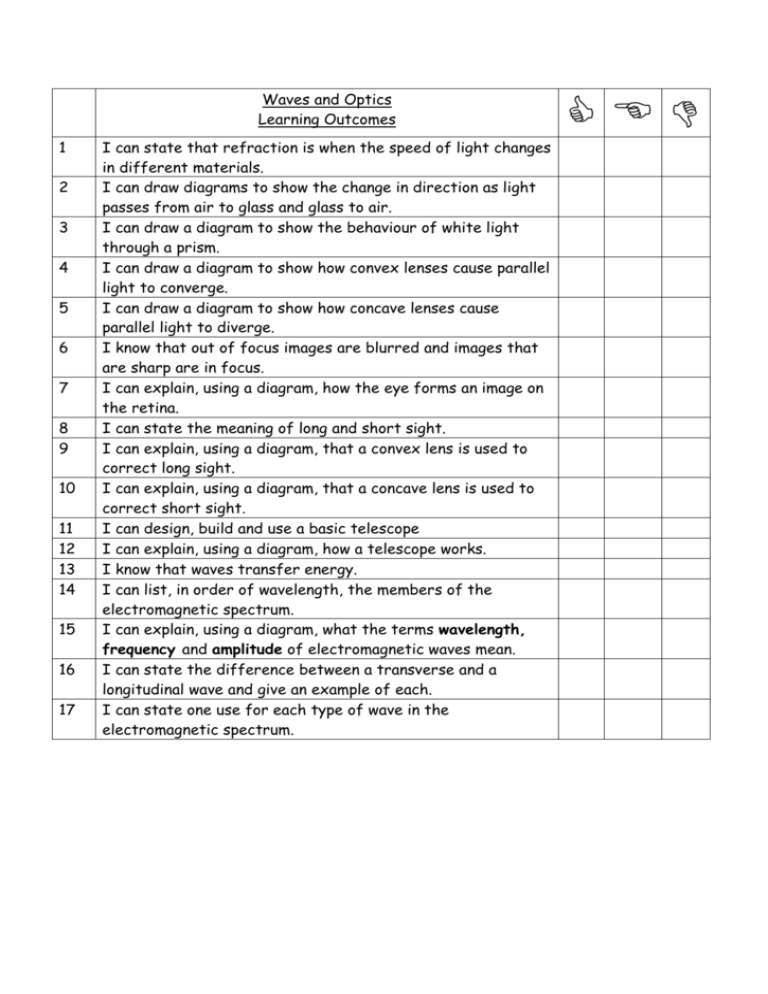
Waves and Optics Learning Outcomes 1 2 3 4 5 6 7 8 9 10 11 12 13 14 15 16 17 I can state that refraction is when the speed of light changes in different materials. I can draw diagrams to show the change in direction as light passes from air to glass and glass to air. I can draw a diagram to show the behaviour of white light through a prism. I can draw a diagram to show how convex lenses cause parallel light to converge. I can draw a diagram to show how concave lenses cause parallel light to diverge. I know that out of focus images are blurred and images that are sharp are in focus. I can explain, using a diagram, how the eye forms an image on the retina. I can state the meaning of long and short sight. I can explain, using a diagram, that a convex lens is used to correct long sight. I can explain, using a diagram, that a concave lens is used to correct short sight. I can design, build and use a basic telescope I can explain, using a diagram, how a telescope works. I know that waves transfer energy. I can list, in order of wavelength, the members of the electromagnetic spectrum. I can explain, using a diagram, what the terms wavelength, frequency and amplitude of electromagnetic waves mean. I can state the difference between a transverse and a longitudinal wave and give an example of each. I can state one use for each type of wave in the electromagnetic spectrum.


